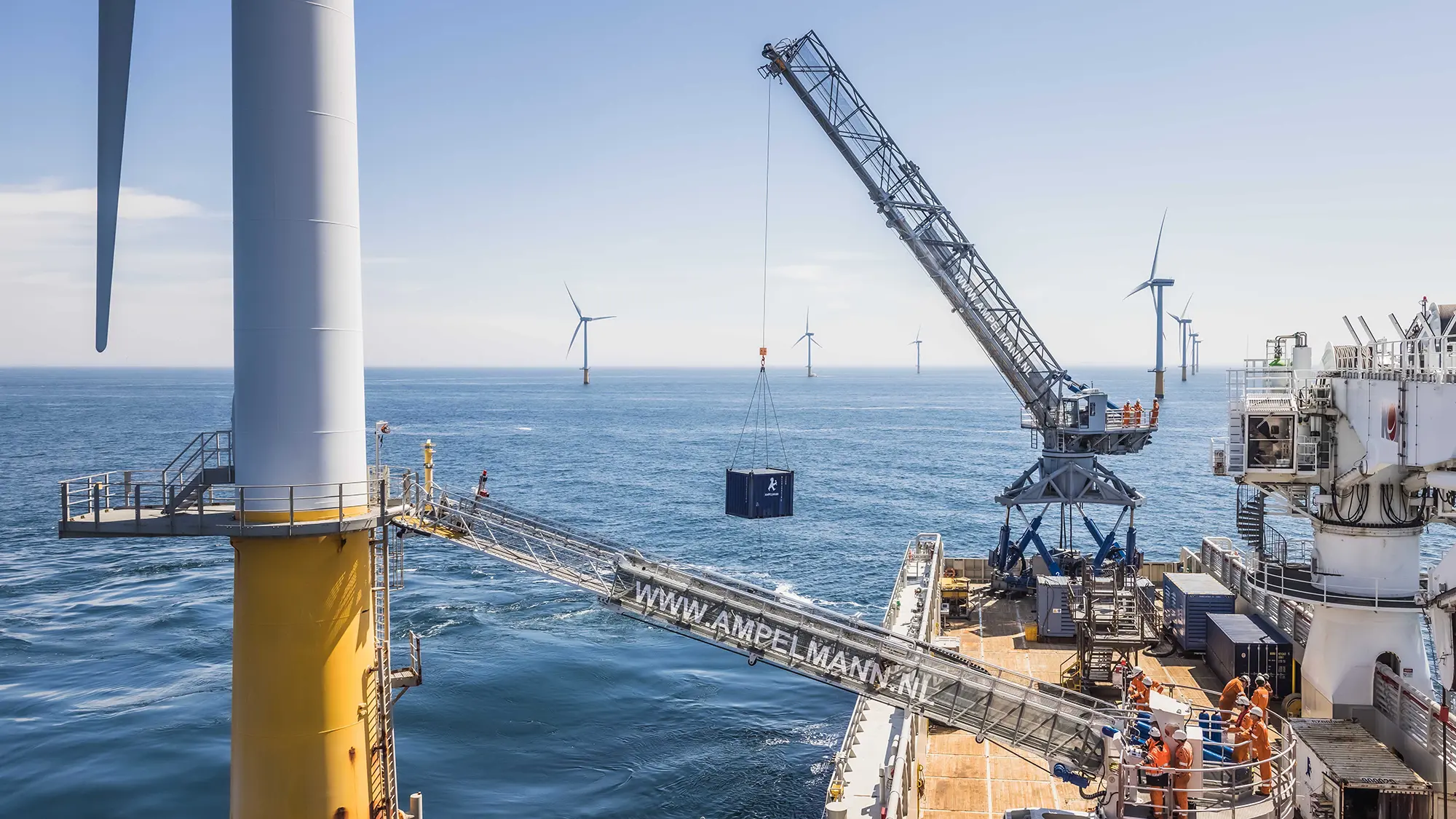Walk to Work: the new standard for safe and efficient offshore access
Walk to Work (W2W), as this is commonly known, is slowly becoming a new offshore standard. From its first application in the North Sea, to the Middle East, Asia Pacific and the Americas, W2W has proven to be a safe, efficient, and cost-effective way to transfer personnel and cargo to and from offshore structures. But what exactly is W2W — and why is it becoming an essential part of offshore project planning?

What is Walk to Work?
Traditionally, accessing offshore installations by sea was restricted by marine and weather conditions. Swinging across by rope, using baskets, ladders, simple gangways and what’s known as ‘bump and jump’ – when a vessel pushes against the offshore structure to allow crew to jump over – are common practices that all pose obvious safety concerns. Methods like these are slow, unreliable and hugely dependent on ideal weather conditions, often causing downtimes and delays with reduced tool time as a result.
W2W is certainly not a new idea. In its broadest sense, it refers to the transfer of personnel between a vessel and an offshore structure using a motion compensated gangway that allows people to walk directly to their worksite at sea. While its roots stretch back all the way to the 1980s, when the first passive motion compensated gangways were installed on large accommodation vessels, only recently did modern W2W solutions enter the market.
Today, they are powered by high-tech gangways that actively compensate for the movements a vessel makes in real-time. Ampelmann pioneered the W2W market through its introduction of the A-type, the first active motion compensated gangway that compensates for motions in all directions (6DOF). While the system counteracts the vessels movements, the gangway remains stable. This ensures safe and reliable access to an offshore installation, structure or vessel in a large variety of sea and weather conditions.
The advantages of W2W
From safety, efficiency to reliability and cost-effectiveness, using gangways to access offshore worksites directly from a vessel offers several clear advantages.
Safe and comfortable
Safety is the heart of all modern W2W systems, it’s why they were developed in the first place. Instead of relying on ladders, ropes, baskets, or timed jumps, offshore personnel can walk across a stable gangway. Streamlined transfers are low-risk and stress free. The result is a safe and comfortable offshore working environment.
High workability
Sea conditions offshore are rarely ideal. High winds, seasonal storms, and unpredictable wave patterns make traditional marine access challenging. W2W systems actively compensate for vessel motion, maintaining a stable connection even in rough seas. This not only improves year-round reliability, it extends the operational weather window and helps prevent costly delays.
Maximise tool time with continuous transfers
W2W systems enable uninterrupted personnel and cargo transfers, allowing for shift changes, emergency evacuations, and deliveries without delay. They combine the advantages of marine access, such quartering crew on vessels for longer periods of time, with high workability and a safe working environment. Continuous access, instead of batch transfers, directly increase tool time —the actual hours spent performing productive offshore work. By maximising uptime and eliminating transfer bottlenecks, W2W ensures crews can make the most of every operational window.
Operational flexibility
W2W systems are adaptable by design. Whether installed on a purpose-built C/SOV’s, smaller or larger offshore vessels, they support a wide range of operations in both the Oil and Gas (O&G) and renewable energy markets. From short-term construction and long-term maintenance scopes to operations require access so floating objects like vessels, FPSO’s and floating turbines (S2S), their ability to adjust to different vessel types, platform heights, and project scopes makes them a fit for virtually any offshore campaign.
Offshore access as easy as crossing the street
A flurry of innovations and technical developments have put W2W firmly on the map. A diverse number of W2W solutions now exist. From motion compensation in three degrees to six degrees of freedom (3DOF and 6DOF), multipurpose personnel and cargo gangways - like the A300 and E1000 – and dedicated C/SOV tower solutions such as the W-type, each gangway is uniquely designed to solve specific offshore challenges.
Safety isn’t an expense – it’s a cost-saving. W2W has emerged as a cost-effective way to reach offshore structures, installations and other vessels. By allowing reliable, year-round access for personnel and cargo, it reduces delays, increases uptime and maximises the efficiency of offshore operations. Supporting a wide range of offshore work across the O&G and wind sectors, modern gangways have set new standards for safety and efficiency.
Recent Articles

Why the Offshore Industry is turning to Mini SOVs and why access matters most

From Houston to Providence: Ampelmann is committed to offshore wind in the USA

